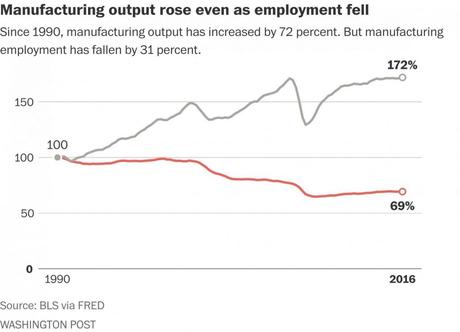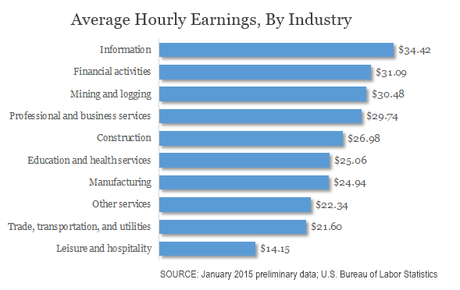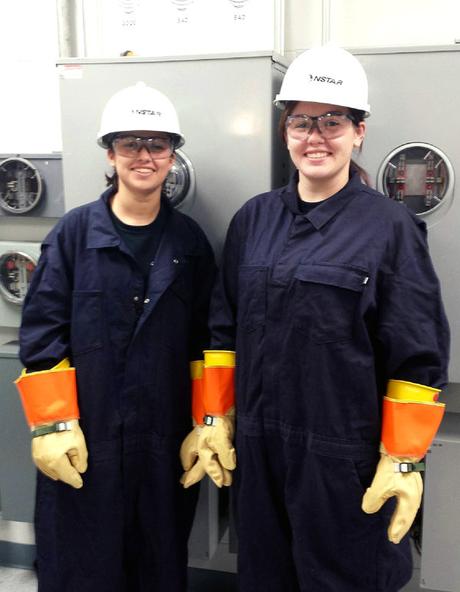Automation may have swept away all the manual work required to get the job done but human efforts are still needed for the supervision and maintenance of these machines performing automation tasks!
Enough of a reason for survival of blue-collar jobs!
Blue-collar jobs: A working class person who performs manual labor. Blue-collar work often involves something being physically built or maintained.
History of Blue-Collar Jobs
Blue collar and white collar is the occupational classifications that distinguish workers who perform manual labor from workers who perform professional jobs.
In earlier days, blue-collar workers used to wear uniforms, mostly blue and worked in trade occupations. White-collar workers performed professional jobs mainly in office and wore white shirts.
This explains why they are called blue-collar and white-collar workers.
Downfall of Blue-Collar Jobs
Downfall of blue-collar jobs is highly noticeable. There are various reasons for this worldwide shrinking in the blue-collar jobs.
Decline in manufacturing/construction jobs
As a result of increase in use of AI, manual jobs are constantly taking hits. Most of the jobs are being fulfilled by the advanced machines manufacturers deploy in order to get rid of human errors.
 This graph showcases the prominent increase in manufacturing output and a noticeable decline in jobs generation.
This graph showcases the prominent increase in manufacturing output and a noticeable decline in jobs generation.
Dissatisfaction & turnover
Blue-collar workers were paid less compared to the white-collar workers, often leading to dissatisfaction at job place and lower income rate.

This graph largely states that industries that require blue-collar workers are getting less hourly earning compared to industries that run on white-collar workers.
Blue-Collar Jobs Re-Enter: What Changed?
The downfall of blue-collar jobs was the scenario until 2015, after that the blue-collar jobs suddenly saw a steep rise in its demand and wage rate.
In fact, the situation has reached to the condition where there is high demand for blue-collar workers and supply is noticeably insufficient.
Millennial attitudes are shifting
Our society is constructed in such a way that each individual is trained to be hired for a white-collar job. Entire emphasis is given on education that can land them a white-collar job.
Blue-collar jobs are still considered as jobs you get if you don’t complete your schooling.
Despite all this, the millennial lot are concentrating more on what they feel like doing.
Most of them realize the perks of blue-collar jobs like better pay, on-site training, and apprenticeships as against instability, cut-throat competition and stagnant pay rate in white-collar jobs.
 2 American women who refused to go for graduation and instead are taking apprenticeship in a utility company
2 American women who refused to go for graduation and instead are taking apprenticeship in a utility company
Need of manual expertise
Human support is needed for complex reasoning, social and emotional intelligence, creativity and certain forms of sensory perception- Jim Wilson, MD, Accenture Plc.
Artificial-intelligence systems don’t have full comprehension of non-standard events, they cant react to the sudden emergency situations in a way humans can. They don’t always have the ability to come up with innovations that improve the process.
You can ship a machine tool to any country in the world – Tim Robertson, instructor, Rolls Royce
But the key is going to be the high-level technician that can interact with the data at high-level activity and be flexible – Craig Torres, Senior Journalist, Bloomberg
Higher wage-rate
There are a lot of blue-collar jobs now that pay more than what any service professional earns.
A mid-career elevator installer earns on average $63,500 a year, while a mid-career civil engineer earns $61,611 – A report by HRDIVE
Did you know?
Some of the tradies earn more than lawyers in Australia! Read more about it here.
Conclusions
Blue collar jobs are now very much high in demand and companies are putting higher resources so they can hire blue collar workers.
Blue-collar fields are desperate for talented workers, as they promise the human perspective in problem solving.

